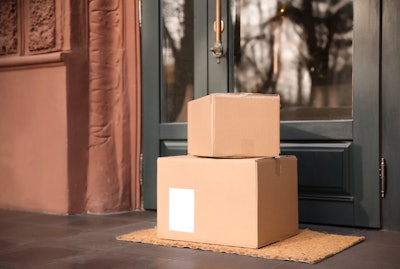
The Coronavirus disease (COVID-19) spurred a massive tailwind for e-commerce in 2020, and the share of online shopping will only continue to grow. Industry experts project nearly 50% growth in online sales by 2024 and with it an equivalent surge of online returns. Reverse logistics has always been a thorny supply chain challenge since fulfillment systems are primarily optimized for the forward flow of goods.
While logistics leaders have been laser-focused on keeping up with new demands, few have considered a long-term strategy for handling online returns in a cost-effective manner. Even retail giants often choose to refund the customer and let them keep the product because it’s cheaper than processing the returns.
Fortunately, with $8.6 billion invested in supply chain tech in just the last quarter, there's plenty of warehouse automation solutions to help retailers keep up with ecommerce demand and returns. The challenge is picking the solution that will meet a business’ unique needs. As logistics professionals consider investing in warehouse automation to support reverse logistics operations, they must consider the following.
Prioritize recapturing revenue
One of the biggest reverse logistics considerations is operational cost. Enter automation. Not only can automation help reduce long-term operational costs, but it can also create revenue-generating opportunities by streamlining the returns to resell process. After all, a returned item already sold once so there is a high probability that someone else might want it.
Once a returned item arrives at a distribution center, it is a race against the clock to process it, complete a quality check and place in a picking location. Slow re-sell processes can lead to brands missing out on a sale, items losing their value and old inventory taking up precious warehouse capacity.
Leading returns automation system will track items through the entire process and allow businesses to decrease the time from return to revenue recapture before a product depreciates or consumer demand dissipates.
Optimize for seamless integration
Warehouse system integrations have the potential to further complicate already complex reverse logistics operation. When vetting warehouse automation technology, be sure to inquire about the implementation timeline and integration process for connecting the new technology with your existing supply chain management systems.
Properly integrated reverse logistics operations can offer companies full visibility of returned items across the entire supply chain, unlocking valuable data on product movement and help inform business decisions. For instance, the data can help businesses detect product identity, quality, and identify any flaws or design issues that otherwise may have gone unnoticed.
Oftentimes it is best to conduct a quick audit of your internal systems prior to starting on your automation journey. That way, you can come into the conversation with a clear idea of your needs and ask your prospective vendors about how their solutions would perform in your specific environment.
Start small, but ensure scalability
Finally, it is important to ensure that the technology you select can keep pace with your business growth. Few businesses want to start on their automation journey just to find out that the hardware or software that they deployed are not scalable enough to meet their future needs. To that extent, it’s best to pick vendors that have a track record of supporting both smaller businesses as well larger enterprise customers because it shows that their solutions can be effectively deployed regardless of scale.
This is especially relevant in retail because it is highly seasonal and forecasts are often wrong. The ability to scale up your operations in a rapid fashion without making massive investments can just be the difference between businesses that win and those that do not.
As e-commerce spend continues to climb, reverse logistics challenges will only continue to grow. By prioritizing revenue recapture, optimizing for integration, and ensuring that automation solutions can evolve with the business, reverse logistics operations can go from being a cost center to driving competitive advantage. With the Q4 holiday peak on the horizon, now is the right time to start thinking about which automated solution is best suited to prepare you for the busiest time of the year.




![Pros To Know 2026 [color]](https://img.sdcexec.com/mindful/acbm/workspaces/default/uploads/2025/08/prostoknow-2026-color.mduFvhpgMk.png?auto=format%2Ccompress&bg=fff&fill-color=fff&fit=fill&h=100&q=70&w=100)







![Pros To Know 2026 [color]](https://img.sdcexec.com/mindful/acbm/workspaces/default/uploads/2025/08/prostoknow-2026-color.mduFvhpgMk.png?ar=16%3A9&auto=format%2Ccompress&bg=fff&fill-color=fff&fit=fill&h=135&q=70&w=240)







